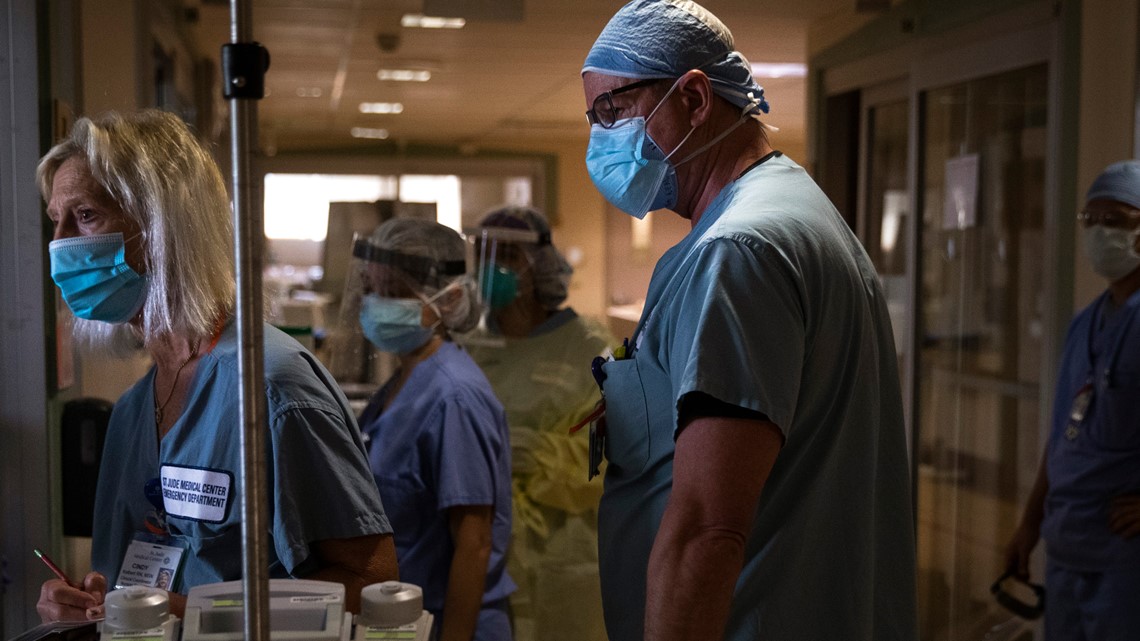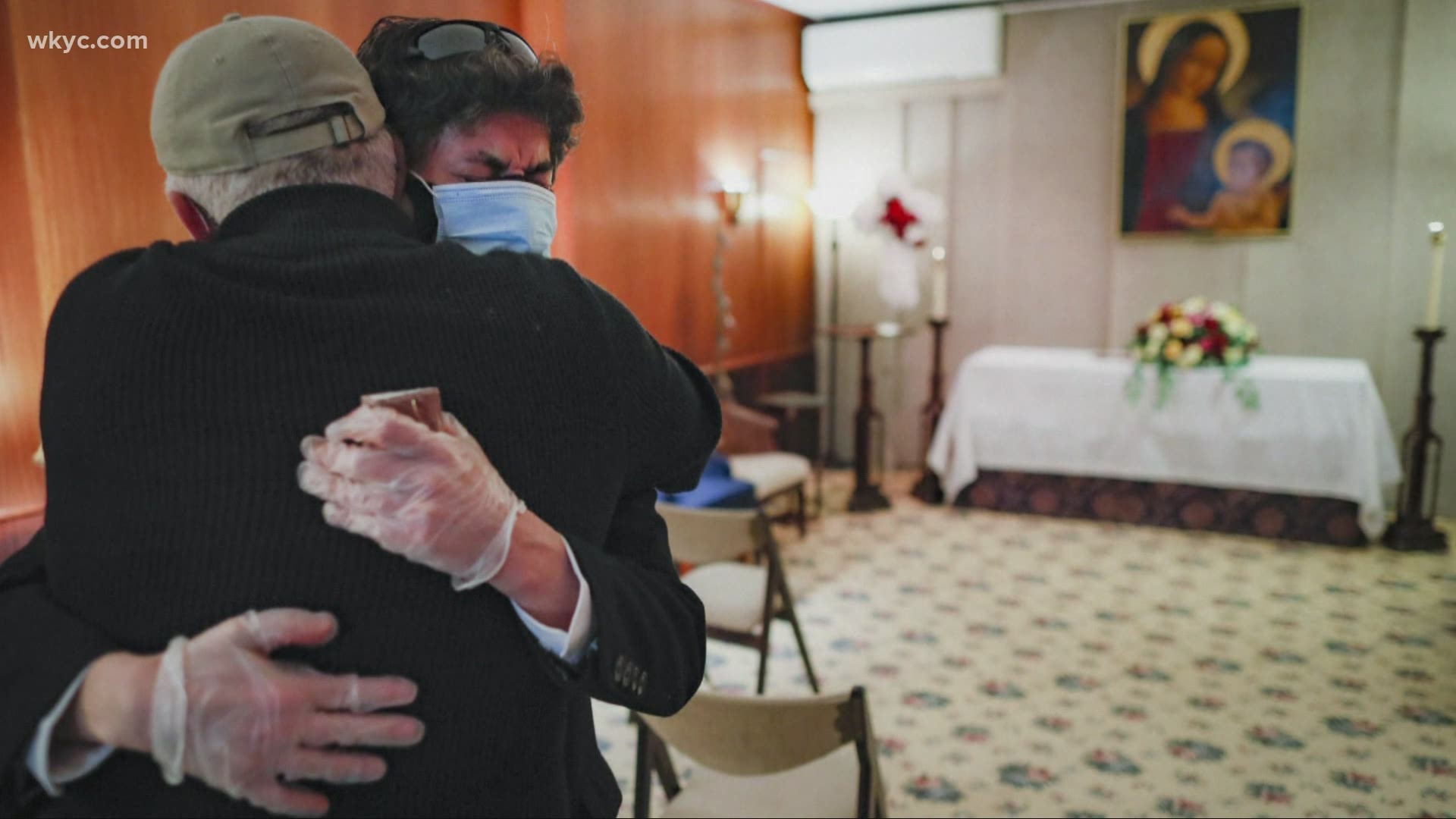The COVID-19 death toll in the U.S. topped 500,000 Monday, all but matching the number of Americans killed in World War II, Korea and Vietnam combined.
The lives lost, as recorded by Johns Hopkins University, are about equal to the population of Kansas City, Missouri, and greater than that of Miami; Raleigh, North Carolina; or Omaha, Nebraska.
And despite the rollout of vaccines since mid-December, a closely watched model from the University of Washington projects more than 589,000 dead by June 1.
The true death toll numbers are thought to be significantly greater, in part because of the many cases that were overlooked, especially early in the outbreak.
The U.S. toll is by far the highest reported in the world, accounting for 20 percent of the nearly 2.5 million coronavirus deaths globally, though the true numbers are thought to be significantly greater, in part because of the many cases that were overlooked, especially early in the outbreak.
Average daily deaths and cases have plummeted in the past few weeks. Virus deaths have fallen from more than 4,000 reported on some days in January to an average of fewer than 1,900 per day. But experts warn that dangerous variants could cause the trend to reverse itself.
Some experts say not enough Americans have been inoculated yet for the vaccine to be making much of a difference.
Instead, the drop-off in deaths and cases has been attributed to the passing of the holidays; the cold and bleak days of midwinter, when many people are inclined to stay home; and better adherence to mask rules and social distancing.
The first known deaths from the virus in the U.S. happened in early February 2020. It took four months to reach the first 100,000 dead. The toll hit 200,000 deaths in September and 300,000 in December. Then it took just over a month to go from 300,000 to 400,000 and about two months to climb from 400,000 to the brink of 500,000.
The U.S. recorded an estimated 405,000 deaths in World War II, 58,000 in the Vietnam War and 36,000 in the Korean War.


For weeks after Cindy Pollock began planting tiny flags across her yard — one for each of the more than 1,800 Idahoans killed by COVID-19 — the toll was mostly a number. Until two women she had never met rang her doorbell in tears, seeking a place to mourn the husband and father they had just lost.
Then Pollock knew her tribute, however heartfelt, would never begin to convey the grief of a pandemic that has now claimed 500,000 lives in the U.S. and counting.
“I just wanted to hug them,” she said. “Because that was all I could do.”
Johns Hopkins University's count said the U.S. surpassed 500,000 coronavirus deaths shortly before 4:45 p.m. Eastern on Monday.
After a year that has darkened doorways across the U.S., the pandemic passed a milestone that once seemed unimaginable, a reminder of the virus's reach into all corners of the country and communities of every size and makeup.
“It’s very hard for me to imagine an American who doesn’t know someone who has died or have a family member who has died,” said Ali Mokdad, a professor of health metrics at the University of Washington in Seattle. “We haven’t really fully understood how bad it is, how devastating it is, for all of us.”
At other moments of epic loss, like the 9/11 terrorist attacks, Americans have pulled together to confront crisis and console survivors. But this time, the nation is deeply divided. Staggering numbers of families are dealing with death, serious illness and financial hardship. And many are left to cope in isolation, unable even to hold funerals.
In recent weeks, virus deaths have fallen from more than 4,000 reported on some days in January to an average of fewer than 1,900 per day.
The toll, accounting for 1 in 5 deaths reported worldwide, has far exceeded early projections, which assumed that federal and state governments would marshal a comprehensive and sustained response and individual Americans would heed warnings.
Instead, a push to reopen the economy last spring and the refusal by many to maintain social distancing and wear face masks fueled the spread.
The figures alone do not come close to capturing the heartbreak.
“I never once doubted that he was not going to make it. ... I so believed in him and my faith,” said Nancy Espinoza, whose husband, Antonio, was hospitalized with COVID-19 last month.
The couple from Riverside County, California, had been together since high school. They pursued parallel nursing careers and started a family. Then, on Jan. 25, Nancy was called to Antonio’s bedside just before his heart beat its last. He was 36 and left behind a 3-year-old son.
“Today it’s us. And tomorrow it could be anybody,” Nancy Espinoza said.
By late last fall, 54 percent of Americans reported knowing someone who had died of COVID-19 or had been hospitalized with it, according to a Pew Research Center poll. The grieving was even more widespread among Black Americans, Hispanics and other minorities.
Deaths have nearly doubled since then, with the scourge spreading far beyond the Northeast and Northwest metropolitan areas slammed by the virus last spring and the Sun Belt cities hit hard last summer.
In some places, the seriousness of the threat was slow to sink in.
When a beloved professor at a community college in Petoskey, Michigan, died last spring, residents mourned, but many remained doubtful of the threat's severity, Mayor John Murphy said. That changed over the summer after a local family hosted a party in a barn. Of the 50 who attended, 33 became infected. Three died, he said.
“I think at a distance people felt 'This isn’t going to get me,'” Murphy said. “But over time, the attitude has totally changed from ‘Not me. Not our area. I’m not old enough,’ to where it became the real deal.”
For Anthony Hernandez, whose Emmerson-Bartlett Memorial Chapel in Redlands, California, has been overwhelmed handling burial of COVID-19 victims, the most difficult conversations have been the ones without answers, as he sought to comfort mothers, fathers and children who lost loved ones.
His chapel, which arranges 25 to 30 services in an ordinary month, handled 80 in January. He had to explain to some families that they would need to wait weeks for a burial.
“At one point, we had every gurney, every dressing table, every embalming table had somebody on it,” he said.
In Boise, Idaho, Pollock started the memorial in her yard last fall to counter what she saw as widespread denial of the threat. When deaths spiked in December, she was planting 25 to 30 new flags at a time. But her frustration has been eased somewhat by those who slow or stop to pay respect or to mourn.
“I think that is part of what I was wanting, to get people talking,” she said, “Not just like, ‘Look at how many flags are in the yard today compared to last month,’ but trying to help people who have lost loved ones talk to other people.”
___
Associated Press video journalist Eugene Garcia contributed to this story.

